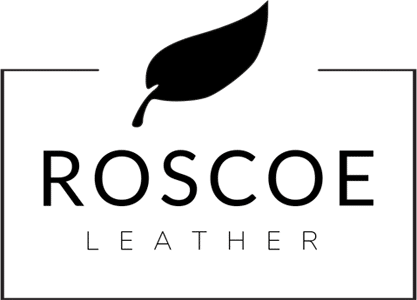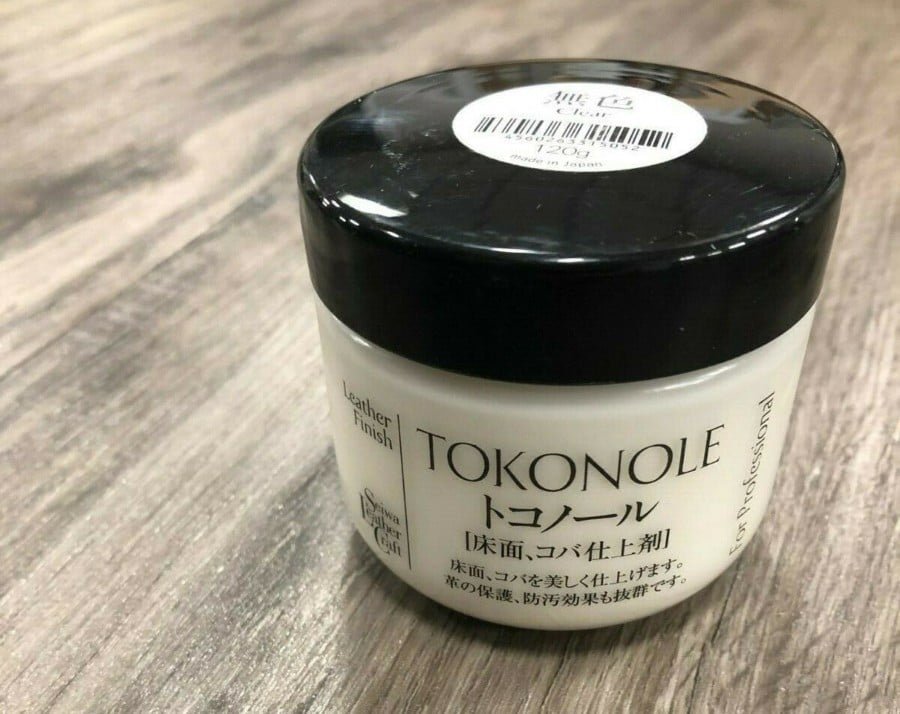Burnishing the edges and backs of your leather is a key part of your project. It elevates your project to a more professional look. The friction from burnishing will give a sleek shine finish to the edges. The best agent is the one that works best for you. In this post, I will share on the following topics:-
- What are burnishing agents used for?
- Types of burnishing agents
– Water
– Saddle Soap
– Tokonole
– Gum Tragacanth
– CMC
– Bees Wax
– Dye - Which burnishing agent should I choose as a beginner?
What are burnishing agents used for?
The common question when you are getting started in leathercraft / leatherwork is why do I need burnishing agents for? Burnishing agent a.k.a. slicking agent used to aid in the burnishing process. It helps you easily achieve the glass-like sleek shiny edge for your project. Burnishing agents also protect and provides a durable finish to your edges.
Types of burnishing agents
There are a lot of burnishing agents a.k.a. slicking agents you can used for burnishing your edges. Below are the list that we compiled:-
Water
This is the “free” way to do it. Damping the edges with water and start burnishing with your slicker. Do not soak the edges, just dampen the edges will do. Getting your edges too wet might ruin your project as it might turn the edges mushy.
Based on experience, its takes a little longer compared to using gum trag or tokonole. However, the results are comparable.
Saddle Soap
Saddle soap is a proprietary compound used for cleaning, conditioning, and protecting leather. It typically contains mild soap, softening ingredients such as lanolin, and preservatives such as beeswax.
Available as a paste, bar or liquid soap. Dampen the edges with water, rub abit of sadde soap and start burnishing! Considered a classic method similar to using plain water.
Best Fiebing’s Saddle Soap Deal on Amazon!
Some people use water and soap as a round one burnishing agent. Then use other agents like beeswax as the round two burnishing agent. There is no single way to solve a problem.
Tokonole
Tokonole is a waterbased, odour-free and toxic free Japanese agent/product which smoothes the edges and flesh side of leather. Tokonole is a great substitute for gum tragacanth.
Tokonole is only made from natural waxes.
- It’s easy to work with
- No unpleasant odor.
- Dries quickly
- Binds leather fibers
- For polishing the edge
Get the best Tokonole deal on Amazon!
In my opinion, this is the best burnishing agent. If you are looking to buy a burnishing agent, buy tokonole. I personally use tokonole now. It is a game changer. It doesn’t take much burnishing effort to achieve the glossy and sleek effect on the edges. Using this always gives me a nice glossy finish. Tokonole contains wax which often gives that extra bit of shine.
Gum Tragacanth
Gum Tragacanth or Gum Trag is a natural plant based gum (also sometimes called Shiraz gum) that has been traditionally used in leathercraft to give a professional edge to belts, straps and leather goods.
It is designed for use on vegetable tanned leathers and can be painted on to the edge before slicking and burnishing with wool daubers, brushes or applicators.
The gum allows the edge fibers to smooth and bond easily during the slicking process. As the Gum Tragacanth dries and heats up due to friction caused by rubbing, the treated edge will darken and shine.
Best Gum Tragacanth Deal on Amazon!
If you are deciding between tokonole and gum trag, just get the tokonole. I’ve personally used both and recommend tokonole over gum trag. That being said, gum trag is commonly used by leathercrafters and is able to achieve the sleek edge finish as well.
CMC Powder
CMC (Carboxymethyl cellulose) – is a chemical substitute which is commonly called Tylose or Tylo powder which are the trade names of CMC manufacturers. Basically it is a substitute for the natural gum tragacanth.
The CMC powder is mixed with water. The results are comparable to tokonole but tokonole has that wax component which give it the extra shine.
Some leathercrafters add wax to the mixture to take it to the next level.
Beeswax
Beeswax is a traditional conditioning treatments that is used in various ways for leathercraft. It helps finish leather edges, waterproofs leather, forms cord, thread and lubricates lace for easier stitching and lacing.
Note: Once beeswax is on the leather, it it acts as a “resist” which prevents stains and dyes from penetrating the leather. Becareful when using beeswax on unfinished leather.
Rub the beeswax on the leather edge until you get enough friction that it heats the wax up and allows it to melt into the fibers of the leather. Beeswax is often used as a combo with water/soap method which acts as a “final round” agent.
Wont go wrong with Beeswax from Tandy or Weaver! Best Deal below!
One of the good things about beeswax is that it seals off the edge and creates a waterproof barrier but it doesn’t really get the glossy finish that I desire.
Dye
Is it possible to use dye as a burnishing agent? Yes! This only works on vegetable tanned leather, won’t work on chrome tanned leather.
Apply dye to the edges of vegetable tanned leather, and start burnishing the edges with a slicker. That way you wont have to use any other burnishing agent like tokonole, water or gum trag. Dye does an amazing job.
Which burnishing agent should I choose as a beginner?
If you are looking for the best burnishing agent. IMHO, tokonole is the best. Personally, I used gum trag at first but once I started using tokonole there was no looking back. I also tend to use dye a lot as a “cheat” and it does an amazing job.
Get the best Tokonole deal on Amazon!
If you are just getting started, you can use water as it is free! CMC powder is relatively cheap and easily obtainable at your local baking shop. If tokonole is hard to source, gum trag or beeswax will work as well.
In the next chapter, we will talk about the types of adhesives and glue used in leathercraft / leatherwork.
Leathercraft Basics – Table of Content
Chapter 1: Leathercraft Basics Introduction
Chapter 2: Understanding the Leathercraft Process
Chapter 3: Tools Needed for Leathercraft
Chapter 4: Leather Explained – Choosing The Right Leather
Chapter 5: Leather Dye
Chapter 6: Burnishing Agents (You are here)
Chapter 7: Adhesive / Glue
Chapter 8: Leather Finishes
Chapter 9: Leathercraft Techniques (Coming Soon)
Chapter 10: Machinery used in Leathercraft (Coming Soon)








